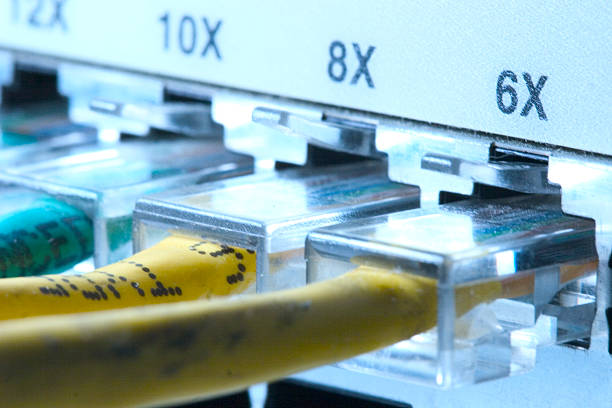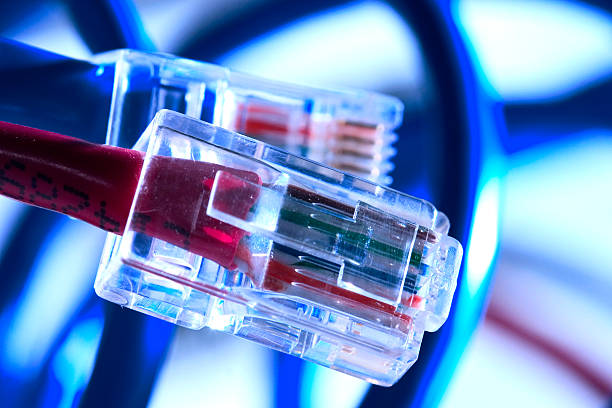
Introduction
Choosing the right Ethernet cable is a critical decision for IT professionals and network installers aiming to optimize network performance, cost, and longevity. At Prime Data Cabling Services, we specialize in helping businesses select and install the ideal cabling solutions for their needs. Whether you’re setting up a small office network or a high-performance data center, understanding the differences between Cat6, Cat6a, and Cat7 cables is essential. This guide compares these Ethernet cable categories based on speed, shielding, installation complexity, cost, and real-world applications to help you make an informed choice.
Understanding Ethernet Cable Categories
Ethernet cables are classified into categories based on their performance specifications, as defined by the Telecommunications Industry Association (TIA). Each category is designed to meet specific networking needs, with higher categories offering improved speed, bandwidth, and interference resistance. Choosing the right category requires balancing current requirements with future growth potential.
What Does “Cat” Rating Mean?
The “Cat” designation stands for “Category,” a standard that outlines a cable’s bandwidth, speed, and shielding capabilities. Cat6, Cat6a, and Cat7 represent progressively advanced standards, each tailored for increasing data demands. Cat6 supports basic gigabit networks, while Cat6a and Cat7 are engineered for higher speeds and more challenging environments. All three categories are backward compatible with older systems like Cat5e, allowing integration into existing setups, though performance is limited to the lowest category in use. Key points to understand include:
Cat6 operates at 250 MHz, suitable for standard business networks.
Cat6a doubles the bandwidth to 500 MHz, supporting faster data transfers.
Cat7, at 600 MHz, is designed for specialized, high-performance applications.
Common Uses of Cat6, Cat6a, and Cat7
Different network environments demand specific cable types based on their performance and durability needs. Cat6 is commonly used in small to medium-sized businesses for everyday tasks like connecting workstations or supporting VoIP systems. Cat6a is preferred in data-intensive settings, such as media production studios or enterprise networks, where consistent high-speed performance is critical. Cat7, with its superior shielding, is typically deployed in specialized applications like industrial facilities or high-density data centers where electromagnetic interference (EMI) is a concern.
Performance Comparison: Cat6 vs. Cat6a vs. Cat7
Evaluating the performance of Cat6, Cat6a, and Cat7 cables is crucial for selecting the right option. These cables differ significantly in speed, shielding, and signal stability, each offering unique advantages for specific network requirements.
Data Speed and Bandwidth
Data speed and bandwidth determine a cable’s capacity to handle data and its transmission rate. Cat6 supports 1 Gbps at 250 MHz for up to 100 meters, with 10 Gbps possible over shorter runs of up to 55 meters. Cat6a delivers reliable 10 Gbps performance at 500 MHz across the full 100-meter distance, making it ideal for high-speed networks. Cat7, operating at 600 MHz, supports 10 Gbps over 100 meters and can achieve up to 40 Gbps in shielded conditions over shorter distances, offering unmatched performance for advanced applications. Key performance metrics include:
Cat6: 1 Gbps standard, 10 Gbps for short runs.
Cat6a: Consistent 10 Gbps over 100 meters.
Cat7: Potential for 40 Gbps in controlled setups.
Shielding and Crosstalk Protection
Interference from external sources or adjacent cables can degrade network performance, making shielding a critical consideration. Cat6 typically uses Unshielded Twisted Pair (UTP) cables, which are effective in low-interference environments but may struggle in dense setups. Cat6a and Cat7 often incorporate Shielded Twisted Pair (STP) or Foiled Twisted Pair (FTP) designs, significantly reducing EMI and crosstalk. This makes them ideal for environments with high electrical noise, such as factories or server rooms, where maintaining signal integrity is paramount.
Maximum Cable Length and Signal Stability
Signal attenuation, or the loss of signal strength over distance, can compromise network reliability. Cat6 maintains 1 Gbps performance up to 100 meters but is limited to 55 meters for 10 Gbps. Cat6a ensures consistent 10 Gbps performance across 100 meters, offering better stability for longer runs. Cat7, with its advanced shielding, provides superior signal stability, making it the best choice for environments requiring high speeds over extended distances.
Latency and Future-Proofing
Low latency and high bandwidth are essential for networks that need to scale with future demands. Cat6 is sufficient for most small business applications but may require upgrades as data needs grow. Cat6a offers a balance of performance and scalability, making it a versatile choice for enterprises anticipating increased traffic. Cat7, with its capacity for higher speeds, is the most future-proof option, particularly for organizations planning to adopt advanced technologies like 40 Gbps networking.
Installation and Cost Considerations
The cost and complexity of installing Ethernet cables are critical factors for IT teams. These considerations influence the feasibility of a cabling project and must align with budget and infrastructure constraints.
Material Cost Differences
Cat6 cables are the most cost-effective, making them a popular choice for budget-conscious projects like small office networks. Cat6a cables are moderately priced, offering a balance of performance and affordability for high-speed applications. Cat7 cables, with their advanced shielding and materials, are the most expensive, typically reserved for specialized setups where performance justifies the cost.
Installation Complexity
Higher-category cables require more precise installation techniques. Cat6 is flexible and straightforward to install, making it suitable for standard setups. Cat6a, with its shielding, is stiffer and may require grounding, increasing installation time and expertise. Cat7 has the most stringent requirements, including proper grounding and shielding management, which can complicate installation and necessitate skilled technicians. Key installation factors include:
Cat6: Easy to handle, minimal setup complexity.
Cat6a: Requires grounding for shielded cables.
Cat7: Demands precise shielding and grounding management.
Testing and Certification
Proper testing ensures cables meet performance standards and deliver expected reliability. Certification tools like Fluke Networks’ DSX CableAnalyzer verify compliance with TIA/EIA standards, preventing issues like crosstalk or signal loss. Thorough testing during installation is critical to maximizing performance and ensuring a strong return on investment, particularly for higher-category cables like Cat6a and Cat7.

Practical Use Cases and Recommendations
The right cable choice depends on the specific demands of your network environment. Understanding where each cable excels helps IT professionals make tailored decisions.
When Cat6 Is Enough
Cat6 is a cost-effective solution for small offices or residential networks with standard internet and VoIP requirements. Its affordability and ease of installation make it ideal for environments where 1 Gbps speeds are sufficient and interference is minimal.
When Cat6a Is the Sweet Spot
Cat6a is the go-to choice for data-heavy environments like media production studios, enterprise networks, or educational institutions. Its ability to deliver 10 Gbps over 100 meters makes it a versatile, future-proof option for networks requiring consistent high performance.
When Cat7 Is Worth the Investment
Cat7 is best suited for niche applications, such as industrial facilities with high EMI or data centers planning for 40 Gbps speeds. Its advanced shielding and performance capabilities make it ideal for future-oriented infrastructure in challenging environments.
Mixed Deployments
Many networks benefit from combining cable types to optimize cost and performance. For example, Cat6 can be used for edge devices like workstations or VoIP phones, while Cat6a or Cat7 is deployed for high-traffic backbone networks to ensure robust connectivity.
Quick Decision Checklist
To select the right Ethernet cable, consider:
Budget vs. Performance: Balance upfront costs with long-term needs.
Distance and Speed: Ensure the cable supports required speeds over the necessary distance.
Environmental Interference: Choose shielded cables (Cat6a or Cat7) for high-EMI areas.
Growth Planning: Opt for higher categories if anticipating future network expansion.
Conclusion
Choosing between Cat6, Cat6a, and Cat7 Ethernet cables requires a careful balance of performance, cost, and future scalability. Cat6 is a cost-effective choice for small-scale networks, Cat6a offers a versatile middle ground for high-performance environments, and Cat7 is ideal for specialized, high-interference setups. By assessing speed, shielding, installation complexity, and practical use cases, IT professionals and network installers can build networks that meet current needs and support future growth. For expert guidance and professional installation, Contact Prime Data Cabling Services.
FAQ’s
1. What is the main difference between Cat6, Cat6a, and Cat7 cables?
Cat6 supports 1 Gbps (10 Gbps up to 55m) at 250 MHz, Cat6a supports 10 Gbps up to 100m at 500 MHz, and Cat7 supports 10 Gbps (potentially 40 Gbps) at 600 MHz with advanced shielding.
2. Is Cat7 worth the extra cost for small businesses?
For most small businesses, Cat6 or Cat6a is sufficient. Cat7 is only justified in high-interference environments or for future-proofing advanced networks.
3. Can I use Cat6a or Cat7 cables with older equipment?
Yes, Cat6a and Cat7 are backward compatible with older Cat6 or Cat5e systems, but performance will be limited to the lowest category in use.
4. How does shielding impact Ethernet cable performance?
Shielding in Cat6a and Cat7 reduces electromagnetic interference and crosstalk, improving signal quality in high-density or industrial environments.
5. How often should Ethernet cables be tested or replaced?
Cables should be tested during installation and every 2-3 years to ensure performance. Replacement is needed only if cables are damaged or fail certification tests.
